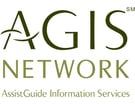Home Wealth Can Help Your Older-Adult Clients to Fight Inflation.
These days, inflation is on the minds of most people — and it is of particular concern for seniors. With prices rising at the fastest pace in decades, many people who are in or nearing retirement have heightened fears they may outlive their savings.
The stage is set for home wealth, which has also been on the rise, to play an important role in helping retiree homeowners to support a more efficient retirement income strategy. As a financial professional, you want to give your clients the best chance at financial success, which is why it is imperative that the strategic use of home equity is part of any retirement-planning conversation.
What Is the Current Rate of Inflation?
By one measure, the January 2022 consumer price index, the cost of consumer goods — e.g., food, housing, and gas — rose on average by 7.5% over the past year. That’s the fastest rise since the early 1980s.*
Retirees Face Unique Challenges When Inflation Soars.
Higher wages generally don’t benefit retirees.
When inflation rises rapidly during your client’s peak earning years, the erosion in the buying power of their dollars could be offset by an increase in wages as businesses adjust to the times.
When your client is in retirement, his or her days of working to earn a paycheck are in the past — or, at least, that’s probably where he or she would like them to stay. So, when prolonged inflation occurs during your client’s retirement, you and your client may have to explore other resources to combat its effects.
Health care expenses loom large in retirement.
Health care costs are rising, and retirees generally have more health care needs and less budget wiggle room than the general population. While there are some things retirees can scale back on, other things like going to see a doctor for medical care are unavoidable, as are their costs.
According to a study conducted by The Senior Citizens League (TSCL), about two-thirds of senior households spent nearly a quarter of their Social Security retirement benefits on health care.** While Social Security is one of the few retirement benefits that periodically adjusts for inflation, TSCL also estimates that since 2000, Social Security benefits have lost 30 percent of their buying power.***
For seniors on fixed incomes, inflation could be especially tough.
Inflation and a fixed income are typically not a good grouping. The less financial flexibility one has in retirement, the harder it could be for him or her to mitigate the impact of inflation.
Seniors don’t have time to wait out prolonged market downturns.
How inflation will affect stock market performance is unknown. But if there were to be a downturn in the market and high inflation, it would make it harder for the average investor to stay ahead of inflation. Your older-adult clients have less time to wait on a market rebound.
Investments with set annual returns, like a fixed-rate bond, are not immune to the effects of inflation, because the set payments received each year would be worth less given high inflation.
Many of today’s retirees are not financially prepared for retirement.
People are living longer, which means one’s money must live longer, too. Many of today’s retirees are counting on traditional retirement strategies — e.g., personal savings, 401(k)s, and Social Security — to meet their security needs throughout retirement. But the hard reality for many retirees is that those strategies alone may not be enough, even without factoring in a potential prolonged period of high inflation.
When a retirement income gap exists, two options retirees can explore to help close that gap is to downgrade their living standards or increase withdrawals from their retirement accounts (which, of course, increases the risk that they will outlive their savings and reduces the assets that you can help them to management).
However, for retirees who own their own home, there is a third — often overlooked or dismissed — option: the strategic use of home equity.
Leveraging Home Equity in Retirement.
For many senior homeowners, the largest portion of their net wealth can be found in a familiar place: their own home. Today, senior homeowners in the U.S. are sitting on over $10 trillion in home equity†. While home equity is good, cash can often be better in retirement, as it is something retirees can use now.
Homeowners have several options for accessing their home’s equity. Outside of selling the home, there are home-secured loans designed to release equity from the home while the borrower continues to live there, including a Home Equity Loan (HEL), a Cash-Out Refinance, and a Home Equity Line of Credit (HELOC).
But senior homeowners may find that the more optimal loan for them to tap home equity is one that’s designed specifically for homeowners aged 62+ and their unique needs. It’s called a Home Equity Conversion Mortgage (HECM, commonly called a reverse mortgage) loan. A distinct advantage of a HECM over other types of equity-release loans is its repayment flexibility, which can help borrowers to increase their monthly cash flow to help meet their security needs in retirement.
How Does a HECM (Reverse Mortgage) Work?
A HECM allows homeowners aged 62+ to convert a portion of the built-up equity they have in their homes into cash (without incurring income tax) and defer repayment for so long as they live in the home and pay the property-related taxes, insurance, and upkeep expenses.
The HECM loan proceeds can be used for just about anything. Options for the borrower to receive the loan proceeds include a single lump sum disbursement; a line of credit to use as needed; and fixed monthly payments (for a set number of months or for the life of the loan).
The HECM loan, like any other type of loan, must be paid back, plus interest and fees. But unlike traditional home equity release loans — for which borrowers must make monthly payments toward the loan balance for the life of the loan — with a HECM, borrowers can choose to pay as much or as little toward the loan balance each month as they wish or make no monthly mortgage payments at all. They just need to pay taxes, insurance, and maintain the home. This repayment flexibility continues until a maturity event occurs, such as the last surviving borrower permanently moving into a nursing home, which would make the loan due and payable. Since a HECM has a “non-recourse” clause, the borrower or their heirs will never owe more than the value of the home at the time of loan maturity.††
How a HECM Can Help A Retiree Fight Inflation.
Any financial shock — like a period of sustained high inflation, having to foot the bill for in-home care costs, or a reduction in retirement income due to the loss of a spouse — makes it harder for retirees to achieve their financial goals.
The prices of consumer goods aren’t the only things these days that are on the rise. Home values have risen to historic values, which presents an appealing opportunity for seniors who are looking to leverage their home equity in retirement.
The bottom line is cash flow is king in retirement. While inflation can erode your client’s monthly cash flow, a HECM can help you and your client to build it back better than before.
Here are just a few examples of how your clients may be able to use a reverse mortgage:
- Refinance a traditional mortgage and free themselves of the burden of fixed monthly mortgage payments. They would still be responsible for maintaining the home and paying the property-related taxes and insurance.
- Use the loan proceeds to cover the higher prices of consumer goods or to pay for in-home care or to renovate their home.
- Use the loan as tax management tool to receive deductions when needed or to withdraw less from IRAs and other taxable sources.†††
- Use the available line of credit as standby portfolio protection. For instance, they could use a reverse mortgage to enhance their cash flow in economic down times, which could make their investments last longer while net worth will not necessarily decrease.†††
- Use the loan to help them get the most lifetime value from their Social Security benefits.
- Use a growing line of credit as a protective hedge against their home’s value — the unused portion of the available line of credit grows at the same rate as the compounding interest rate on the loan balance, giving them access to more funds over time.
For many of your older-adult clients, using home equity in retirement is no longer a matter of if, it’s simply a matter of when. If you are interested in learning more about HECM loans and how having them in your financial toolkit can help you to serve your older-adult homeowner clients more fully, Fairway Independent Mortgage Corporation can help. Connect with us today.
*Source: U.S. Bureau of Labor and Statistics. https://www.bls.gov/opub/ted/2022/consumer-prices-up-7-5-percent-over-year-ended-january-2022.htm
**Source: The Senior Citizens League (TSCL). Two-thirds of older households spending more than 24 percent of their Social Security benefits on healthcare. November 2020. https://seniorsleague.org/two-thirds-of-older-households-spending-more-than-24-percent-of-their-social-security-benefits-on-healthcare/
**Source: The Senior Citizens League (TSCL). SOCIAL SECURITY BENEFITS LOSE 30% OF BUYING POWER SINCE 2000. May 2020. https://seniorsleague.org/social-security-benefits-lose-30-of-buying-power-since-2000-no-cola-likely-for-2021/
†Source: Q2 2021 NRMLA/RiskSpan Reverse Mortgage Market Index. https://www.nrmlaonline.org/about/press-releases/senior-home-equity-exceeds-record-10-1-trillion
††There are some circumstances that will cause the loan to mature and the balance to become due and payable. Borrower is still responsible for paying property taxes and insurance and maintaining the home. Credit subject to age, property and some limited debt qualifications. Program rates, fees, terms and conditions are not available in all states and subject to change.
†††This advertisement does not constitute tax and/or financial advice from Fairway.
Copyright©2022 Fairway Independent Mortgage Corporation. NMLS#2289. 4750 S. Biltmore Lane, Madison, WI 53718, 1-866-912-4800. Distribution to general public is prohibited. All rights reserved. Equal Housing Opportunity.






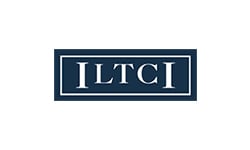

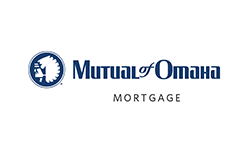
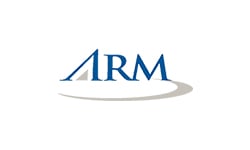
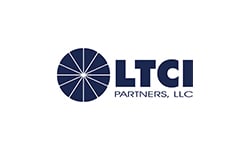




-CMYK.png?width=250&name=LifeSecureLogo(F)-CMYK.png)
